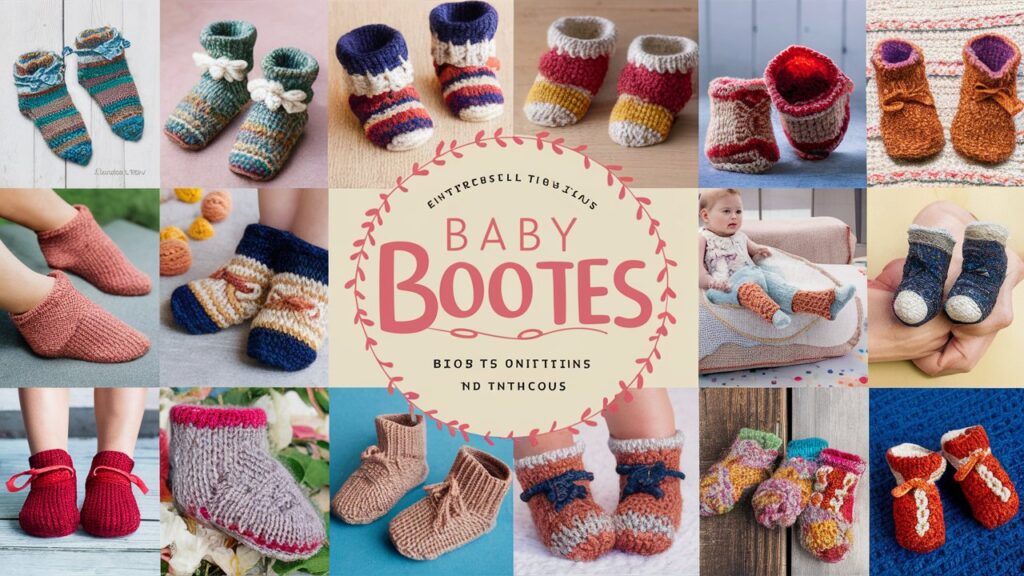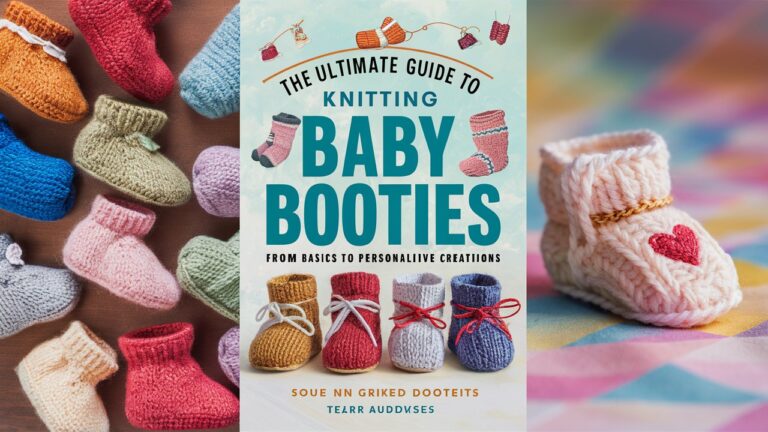Introduction
Knitting baby booties is a heartwarming craft that combines practicality with creativity. These tiny treasures are perfect for gifting, heirlooms, or simply cherishing your little one’s first steps. Whether you’re a seasoned knitter or a beginner, this guide will walk you through every step, from selecting materials to adding decorative flourishes. By the end, you’ll not only master the basics but also learn how to infuse personality into your designs. Let’s dive into the cozy world of knitting baby booties!
1. Essential Materials for Knitting Baby Booties
Before casting on, gather your supplies. The right tools ensure a smooth knitting experience. You’ll need:
- Soft, Baby-Safe Yarn: Opt for hypoallergenic acrylic, cotton, or bamboo blends that are gentle on sensitive skin.
- Knitting Needles: Size 3–5 (3.25–3.75 mm) needles work best for lightweight booties.
- Stitch Markers: These help track shaping and decreases.
- Tapestry Needle: For weaving in ends and sewing seams.
- Scissors: Sharp ones for clean cuts.
- Buttons or Embellishments (optional): Ensure they’re securely attached to avoid choking hazards.
Invest in high-quality materials—your efforts deserve durability and comfort.
2. Choosing the Perfect Yarn for Baby Booties
Yarn selection is critical for both aesthetics and functionality. Prioritize machine-washable fibers to withstand frequent laundering. DK or sport-weight yarn strikes a balance between warmth and flexibility. For color, pastels or muted tones are timeless, but don’t shy away from vibrant hues for a playful twist. Avoid wool if the baby has eczema or allergies. Pro tip: Swatch-test your yarn to gauge softness and stitch definition.
3. Step-by-Step Instructions for Knitting Baby Booties
Follow this basic pattern to create classic booties:
a. Casting On and Ribbed Cuff
Begin with 30–40 stitches (adjust based on baby’s size). Work a 1×1 rib (knit 1, purl 1) for 10 rows to create a stretchy cuff.
b. Shaping the Foot
Switch to stockinette stitch (knit every row) and increase stitches gradually to form the foot. Use stitch markers to denote the instep and sole.
c. Decreasing for the Toe
After reaching the desired length, decrease stitches symmetrically to shape the toe. Kitchener stitch or a simple drawstring closure ensures a smooth finish.
d. Seaming and Assembly
Sew the heel seam neatly and attach any embellishments. Repeat for the second bootie, ensuring symmetry.
4. Adding Decorative Touches to Your Booties
Elevate your booties with creative details:
- Embroidery: Stitch initials, stars, or tiny flowers using contrasting yarn.
- Pom-Poms or Tassels: Attach to the cuffs for whimsy.
- Lace Patterns: Incorporate eyelet or cable stitches for a vintage look.
- Buttons: Sew heart-shaped or animal-themed buttons (ensure they’re baby-safe).
Always prioritize safety—avoid loose threads or detachable parts.

5. Common Mistakes to Avoid When Knitting Baby Booties
Even experienced knitters stumble. Watch out for:
- Uneven Tension: Practice consistent stitches to prevent lumpy areas.
- Ignoring Gauge: A too-tight bootie won’t fit; swatch first!
- Overcomplicating Designs: Simplicity often shines for tiny items.
- Forgetting Stitch Markers: They’re lifesavers for symmetrical shaping.
6. Caring for Hand-Knit Baby Booties
Preserve your creations with proper care:
- Hand-Wash in lukewarm water with mild detergent.
- Lay Flat to Dry to maintain shape.
- Store in a breathable bag to prevent moth damage.
7. Personalizing Your Baby Booties for Special Occasions
Tailor booties to celebrate milestones:
- Holiday Themes: Add miniature Christmas trees or pumpkins.
- Gender-Neutral Palettes: Use sage green, mustard, or gray for modern appeal.
- Monograms: Embroider the baby’s initials for a bespoke touch.
Conclusion
Knitting baby booties is more than a craft—it’s a labor of love. With the right techniques, materials, and a dash of creativity, you’ll create keepsakes that families will treasure for years. Remember, every stitch carries warmth and care, making these booties far more than just footwear. Happy knitting!
Frequently Asked Questions (FAQs)
Q1: What’s the best yarn for newborns?
A: Choose super-soft, machine-washable acrylic or organic cotton to avoid irritation.
Q2: How do I adjust the bootie size?
A: Modify the stitch count or needle size. Measure the baby’s foot and compare it to your gauge swatch.
Q3: Can I make non-slip soles?
A: Yes! Sew fabric grips or use puff paint on the soles for traction.
Q4: How long does it take to knit a pair?
A: Beginners: 4–6 hours; experienced knitters: 2–3 hours.
Q5: Are knitted booties safe for sleep?
A: Opt for breathable designs without loose embellishments, and always supervise use.
Now you’re ready to knit with confidence and creativity! 🧖🧶
